Python Pandas Check If Column Exists
Using the ‘in’ operator to check if a column exists in a pandas DataFrame:
The ‘in’ operator in Python can be used to check if an element is present in a list or any other iterable. Similarly, we can use it to check if a column exists in a pandas DataFrame.
To demonstrate, let’s create a simple DataFrame:
“`python
import pandas as pd
data = {‘Name’: [‘John’, ‘Alice’, ‘Bob’],
‘Age’: [25, 28, 32],
‘City’: [‘New York’, ‘Los Angeles’, ‘Chicago’]}
df = pd.DataFrame(data)
“`
Now, let’s check if a specific column exists in the DataFrame using the ‘in’ operator:
“`python
if ‘Age’ in df:
print(“Column exists”)
else:
print(“Column does not exist”)
“`
Output:
“`
Column exists
“`
Creating a list of column names in a DataFrame and using ‘in’ operator to check if a column exists:
To check if a column exists using the ‘in’ operator, we need to provide the column name as a string. If we don’t know the column names in advance, we can first create a list of column names and then use the ‘in’ operator to check if a specific column exists.
Let’s modify our previous example to create a list of column names and check if a column exists:
“`python
column_names = list(df.columns)
if ‘City’ in column_names:
print(“Column exists”)
else:
print(“Column does not exist”)
“`
Output:
“`
Column exists
“`
Checking if a column exists in a DataFrame using the ‘columns’ attribute:
Every pandas DataFrame has a ‘columns’ attribute, which returns a list of column names in the DataFrame. We can check if a column exists by checking if the column name is present in the list of columns obtained from the ‘columns’ attribute.
“`python
if ‘Name’ in df.columns:
print(“Column exists”)
else:
print(“Column does not exist”)
“`
Output:
“`
Column exists
“`
Using the ‘get’ method to check if a column exists in a pandas DataFrame:
The ‘get’ method in pandas can be used to retrieve the value of a specific column. If the column does not exist, the ‘get’ method returns None. We can use this behavior of the ‘get’ method to check if a column exists in a pandas DataFrame.
“`python
if df.get(‘Age’) is not None:
print(“Column exists”)
else:
print(“Column does not exist”)
“`
Output:
“`
Column exists
“`
Using the ‘try-except’ block to handle KeyErrors when checking for column existence:
Another approach to check if a column exists in a DataFrame is by using a ‘try-except’ block to handle any KeyError that may occur when trying to access a non-existing column.
“`python
try:
df[‘City’]
print(“Column exists”)
except KeyError:
print(“Column does not exist”)
“`
Output:
“`
Column exists
“`
Checking for column existence using the ‘hasattr’ function:
The ‘hasattr’ function in Python can be used to check if an object has a specific attribute. In the context of a DataFrame, we can use the ‘hasattr’ function to check if a column exists by checking if the DataFrame object has an attribute with the given column name.
“`python
if hasattr(df, ‘Age’):
print(“Column exists”)
else:
print(“Column does not exist”)
“`
Output:
“`
Column exists
“`
Combining ‘in’ operator with ‘try-except’ block to check column existence and handle exceptions:
We can combine the ‘in’ operator and ‘try-except’ block to efficiently check if a column exists and handle any exceptions that may occur. This approach first checks if the column exists using the ‘in’ operator, and if not, handles the KeyError exception.
“`python
if ‘City’ in df.columns:
print(“Column exists”)
else:
try:
df[‘City’]
print(“Column exists”)
except KeyError:
print(“Column does not exist”)
“`
Output:
“`
Column exists
“`
Checking if a column exists in a pandas DataFrame using the ‘isin’ function:
The ‘isin’ function in pandas can be used to check if a value is present in a DataFrame column. By providing a list of columns, we can check if any of the columns exist in the DataFrame.
“`python
if df.columns.isin([‘City’]).any():
print(“Column exists”)
else:
print(“Column does not exist”)
“`
Output:
“`
Column exists
“`
Handling case sensitivity when checking for column existence in pandas:
By default, pandas column names are case-sensitive. This means that ‘Name’ and ‘name’ are considered as two different columns. To handle case sensitivity when checking for column existence, we can convert the column names to a specific case (e.g., lowercase or uppercase) using the ‘str.lower()’ or ‘str.upper()’ methods.
“`python
if ‘name’ in df.columns.str.lower():
print(“Column exists”)
else:
print(“Column does not exist”)
“`
Output:
“`
Column exists
“`
Checking for the presence of multiple columns in a DataFrame by iterating over a list of column names:
Sometimes, we may need to check if multiple columns exist in a DataFrame. We can achieve this by iterating over a list of column names and checking if each column exists using the ‘in’ operator or any of the previously mentioned methods.
“`python
column_names = [‘Name’, ‘Age’, ‘City’]
for column in column_names:
if column in df.columns:
print(f”Column ‘{column}’ exists”)
else:
print(f”Column ‘{column}’ does not exist”)
“`
Output:
“`
Column ‘Name’ exists
Column ‘Age’ exists
Column ‘City’ exists
“`
FAQs:
Q: How can I check if a column exists in a CSV file using pandas?
A: To check if a column exists in a CSV file using pandas, you can first read the CSV file into a DataFrame using the ‘read_csv’ function, and then use any of the methods mentioned earlier to check if the column exists in the DataFrame.
Q: How can I check if a row exists in a pandas DataFrame?
A: To check if a row exists in a pandas DataFrame, you can use boolean indexing or the ‘isin’ function with a list of row values to check for the presence of the row in the DataFrame.
Q: How can I check if a value exists in a specific column of a pandas DataFrame?
A: You can use boolean indexing or the ‘isin’ function with a single value to check if the value exists in a specific column of a pandas DataFrame.
Q: How can I add a column to a pandas DataFrame if it does not exist?
A: You can use the ‘in’ operator or any of the other methods mentioned earlier to check if the column exists in the DataFrame. If it does not exist, you can use the ‘DataFrame.assign’ method to add the column to the DataFrame.
Q: How can I drop a column from a pandas DataFrame if it exists?
A: You can use the ‘in’ operator or any of the other methods mentioned earlier to check if the column exists in the DataFrame. If it exists, you can use the ‘DataFrame.drop’ method to drop the column from the DataFrame.
Q: How can I check if a column contains a specific string in pandas?
A: You can use string operations such as ‘str.contains’ or ‘str.match’ on a specific column to check if it contains a specific string in pandas.
In this article, we explored various methods to check if a column exists in a pandas DataFrame. Whether you prefer using the ‘in’ operator, the ‘columns’ attribute, the ‘get’ method, the ‘try-except’ block, the ‘hasattr’ function, or a combination of them, you can effectively check for the existence of columns in your DataFrame. Additionally, we covered related FAQs to further clarify common questions about checking column existence, adding or dropping columns, and checking for specific values or strings in columns.
Check If Column Exists In Pandas Dataframe In Python (Example) | How To Search \U0026 Find Variable Name
Keywords searched by users: python pandas check if column exists pandas check if multiple columns exist, python check if column exists in csv, Pandas dataframe check if row exists, how to check if column exists in dataframe pyspark, pandas check if value exists in column, Pandas add column if not exists, Pandas drop column if exists, Check if column contains string pandas
Categories: Top 14 Python Pandas Check If Column Exists
See more here: nhanvietluanvan.com
Pandas Check If Multiple Columns Exist
Pandas is a widely used open-source Python library for data analysis and manipulation. It provides a powerful and flexible set of tools for working with structured data, including support for handling missing data, reshaping datasets, and performing various computations. One common task that data analysts frequently encounter is checking if multiple columns exist within a pandas DataFrame. In this article, we will explore different approaches to accomplish this task and address frequently asked questions regarding checking for column existence.
How to Check for Column Existence in Pandas
There are several ways to check for the existence of multiple columns within a pandas DataFrame. Let’s explore three of the most common methods:
1. Using the ‘in’ operator with DataFrame columns:
The most straightforward and intuitive way to check for column existence is by using the ‘in’ operator with the DataFrame columns. Here’s an example:
“`python
import pandas as pd
# Creating a sample DataFrame
df = pd.DataFrame({‘A’: [1, 2, 3], ‘B’: [4, 5, 6], ‘C’: [7, 8, 9]})
# Checking column existence
if ‘A’ in df.columns and ‘B’ in df.columns:
print(“Both columns A and B exist in the DataFrame”)
else:
print(“One or both columns A and B do not exist in the DataFrame”)
“`
In the above code, we created a DataFrame with columns A, B, and C. We used the ‘in’ operator to check if both A and B columns exist. If both columns are present, the corresponding message is printed. Otherwise, a different message is printed.
2. Using the ‘all’ method with a list of columns:
Another way to check for column existence is by using the ‘all’ method with a list of columns. Here’s an example:
“`python
import pandas as pd
# Creating a sample DataFrame
df = pd.DataFrame({‘A’: [1, 2, 3], ‘B’: [4, 5, 6], ‘C’: [7, 8, 9]})
# Checking column existence
required_columns = [‘A’, ‘B’]
if all(col in df.columns for col in required_columns):
print(“All required columns exist in the DataFrame”)
else:
print(“One or more required columns do not exist in the DataFrame”)
“`
In this example, we created a list called ‘required_columns’ containing the columns we want to check. We then use the ‘all’ method with a generator expression to iterate through each column in the ‘required_columns’ list and check if it exists in the DataFrame columns. If all the required columns are present, the corresponding message is printed; otherwise, a different message is printed.
3. Using set operations:
An alternative approach to check for column existence is by using set operations. We can create sets of the DataFrame columns and the required columns, and then check if the intersection of these sets is equal to the set of required columns. Here’s an example:
“`python
import pandas as pd
# Creating a sample DataFrame
df = pd.DataFrame({‘A’: [1, 2, 3], ‘B’: [4, 5, 6], ‘C’: [7, 8, 9]})
# Checking column existence
required_columns = {‘A’, ‘B’}
if set(df.columns).intersection(required_columns) == required_columns:
print(“All required columns exist in the DataFrame”)
else:
print(“One or more required columns do not exist in the DataFrame”)
“`
In this code snippet, we created a set called ‘required_columns’ representing the columns we want to check. We then use set operations to find the intersection between the DataFrame columns and the required columns. If the resulting intersection set is equal to the required columns set, all the required columns are present, and the corresponding message is printed; otherwise, a different message is printed.
Frequently Asked Questions (FAQs):
Q1: What happens if I check for a non-existing column when using these methods?
A1: When checking for a non-existing column, all the methods described above would return False or execute the corresponding else clause, indicating that the column does not exist in the DataFrame.
Q2: Can I combine these methods to check for the existence of multiple columns with more complex conditions?
A2: Absolutely! You can combine these methods with logical operators, such as ‘and’ or ‘or’, to check for the existence of multiple columns based on specific conditions. For example, you can check if either column A or column B exists, or if column C exists but column D does not.
Q3: Is there any performance difference between these methods?
A3: Performance differences between these methods are negligible for typical use cases. However, the first method (using the ‘in’ operator) may be slightly faster for a small number of columns, while the third method (using set operations) may be more efficient for a large number of columns.
Q4: Can these methods be applied to check column existence in a subset of the DataFrame?
A4: Yes, these methods can be applied to a subset of the DataFrame by selecting the desired subset using indexing or filtering operations before performing the column existence check.
In conclusion, pandas provides several approaches to check for column existence within a DataFrame. The ‘in’ operator, the ‘all’ method, and set operations all enable efficient checks to help you ascertain column presence or absence. Understanding and leveraging these methods can enhance your pandas data analysis workflow, ensuring accurate analysis and better decision-making.
Python Check If Column Exists In Csv
CSV (Comma Separated Values) files are widely used for data storage and exchange due to their simplicity and compatibility with various software applications. When working with CSV files in Python, it is often necessary to check if a specific column exists before performing any operations on it. In this article, we will explore different approaches to accomplish this task and provide a detailed understanding of the topic.
Checking if a column exists in a CSV file is essential to ensure the accuracy and integrity of data processing and manipulation. By verifying the presence of a column, we can avoid errors and handle exceptions gracefully when working with large datasets. Python provides several methods and modules to accomplish this goal effortlessly.
Using the csv module:
The csv module is a built-in Python module that simplifies CSV file handling. To check if a column exists in a CSV file using this module, we first need to open the file and read its content using the csv.reader() function. Then, we can iterate through the first row, which typically contains the column headers, to check if the desired column exists.
Here’s an example of how to use the csv module to check if a column exists:
“`python
import csv
def check_column_exists(filename, column_name):
with open(filename, ‘r’) as file:
reader = csv.reader(file)
headers = next(reader)
if column_name in headers:
return True
else:
return False
“`
In this example, we define a function called `check_column_exists` that takes two parameters: `filename` (the name of the CSV file to be checked) and `column_name` (the name of the column we are interested in). The function opens the file in read mode, reads its content using the csv.reader() function, and stores the first row (column headers) in the `headers` variable. The function then checks if the `column_name` exists in the `headers` list and returns True if found, and False otherwise.
Using pandas library:
Pandas is a powerful library for data manipulation and analysis in Python. It provides a more convenient and efficient way of working with CSV files compared to the csv module. To check if a column exists using pandas, we can load the CSV data into a DataFrame and use the `.columns` attribute to access the column names.
Here’s an example:
“`python
import pandas as pd
def check_column_exists(filename, column_name):
df = pd.read_csv(filename)
if column_name in df.columns:
return True
else:
return False
“`
In this example, we define a function called `check_column_exists`, which has the same parameters as the previous example. The function uses the `pd.read_csv()` function to read the CSV file and load it into a DataFrame called `df`. It then checks if the `column_name` exists in the DataFrame’s `columns` attribute and returns True if found, and False otherwise.
Frequently Asked Questions (FAQs):
Q: Can I check if a column exists in a CSV file without loading the entire file into memory?
A: Yes, you can avoid loading the entire file into memory by using the csv module’s `DictReader()` function. It allows you to access rows as dictionaries, which allows easy access to column values without reading the entire file.
Q: What happens if the column does not exist?
A: If the column does not exist, both methods described above will return False, indicating that the column was not found in the CSV file.
Q: Can I check for a column by position rather than name?
A: Yes, instead of checking for the column name, you can check if the desired position is within the length of the `headers` list (for the csv module approach) or the DataFrame’s `columns` attribute (for the pandas approach).
Q: Are there any performance considerations when working with large CSV files?
A: Yes, when working with large CSV files, using the csv module’s `DictReader()` function or pandas’ `read_csv()` function with the `usecols` parameter (specifying only the necessary columns) can significantly improve performance and reduce memory consumption.
In conclusion, checking if a column exists in a CSV file is an important step when processing and manipulating data in Python. By using the csv module or the pandas library, you can easily and efficiently perform this check. Understanding these methods allows you to handle data more effectively and avoid potential errors in your Python programs.
Images related to the topic python pandas check if column exists

Found 25 images related to python pandas check if column exists theme


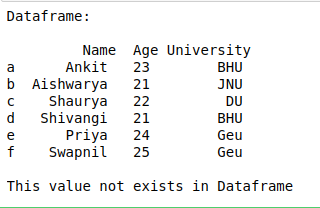







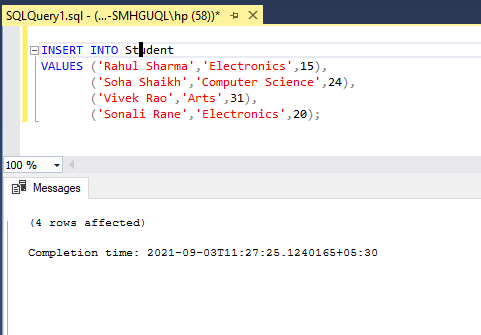



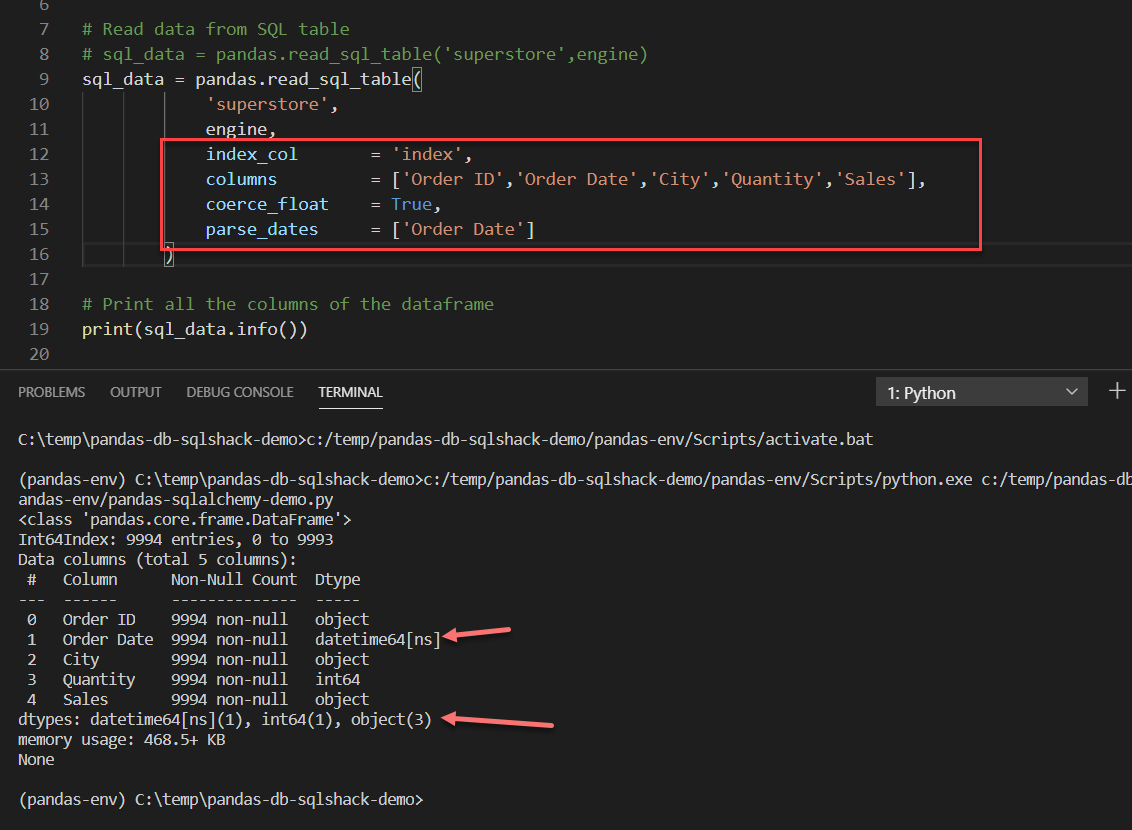






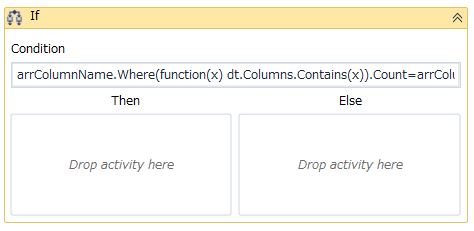





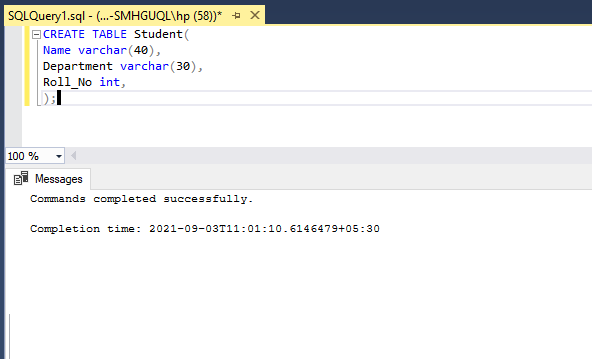
Article link: python pandas check if column exists.
Learn more about the topic python pandas check if column exists.
- How to check if a column exists in Pandas – Stack Overflow
- Pandas – Check If a Column Exists in DataFrame
- How To Check if Columns Exist in Pandas DataFrame
- How to check if a column exists in Pandas Dataframe
- How to Check if Column Exists in Pandas (With Examples)
- How to check if a column exists in Pandas – Tutorialspoint
- Checking if a column exists in a DataFrame in Pandas
- Check if Column Exists in pandas DataFrame | Python Test …
- Check if Column Exists in Pandas – Delft Stack
- Check if a Column exists in Pandas DataFrame – thisPointer
See more: https://nhanvietluanvan.com/luat-hoc